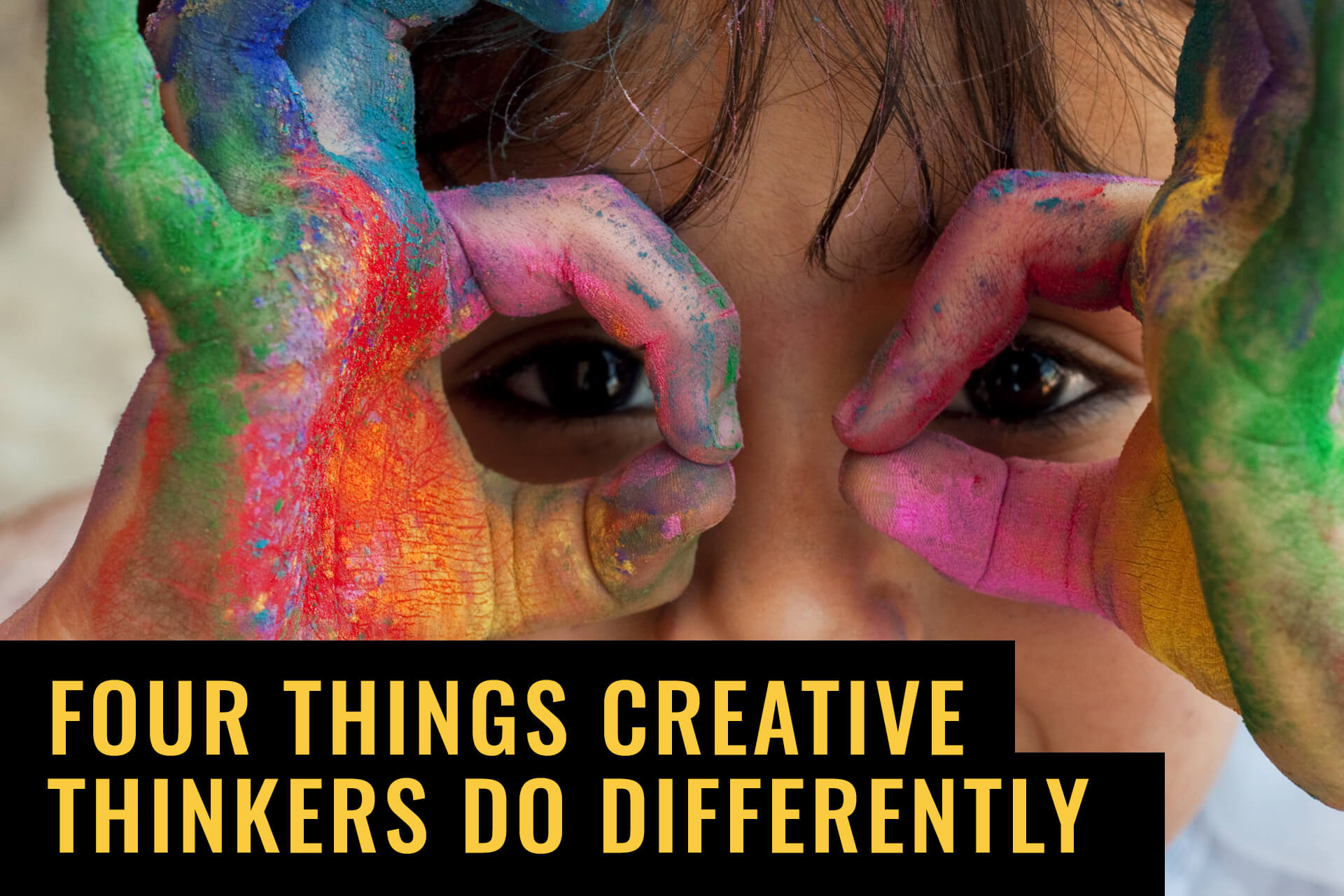But how do you nurture this behavior? What’s the strategy for encouraging new ideas at your organization to foster creativity? To answer this question, it helps to understand how the creative process really works.
Let’s start by examining what makes highly creative people different. And by creative people I’m not necessarily talking about agency “creatives” — the writers and designers. Creative thinkers come from every walk of life. Based on research, what seems to set them apart from others is how they approach problems.
1. Make many attempts
The idea that highly creative thinkers have sudden epiphanies or “aha!” moments simply isn’t true. There may be a moment when an idea suddenly presents itself, crystallizes in one’s mind, but it’s inevitably the result of a long process of trial and error. In fact, the reason original thinkers seem to have the most unique ideas is because they try out the most ideas. It’s a volume thing. The reality is you have to work through a lot of bad ideas, some embarrassingly bad, to land on one truly good one.
Elon Musk’s SpaceX is a good example. The company was all over the news recently with its rocket launch and booster recovery. But six rocket failures preceded SpaceX’s last launch. In fact, Musk’s personal business history is riddled with failures, yet he continues to try new things and today is seen as one of the most innovative entrepreneurs.
2. Stay confident when ideas fall short or are rejected
It’s easy to doubt yourself when your idea tanks — sometimes miserably. People point fingers. The financial ramifications can be severe. But creative thinkers seem to be less fazed by this. They innately recognize that the first few attempts are probably going to fall short. They understand this even when others are knocking the idea, or worse, questioning their ability.
Because they get this reality, they’re more likely to persevere when others would give up. They stick with it and continue refining an idea until it’s successful. Stephen Spielberg was famously rejected from the USC film school. Oprah was fired from her first TV anchor job. Certain people embrace failure as learning experiences. As Musk said, “If things are not failing. you are not innovating enough.”
3. Get exposed to many different ideas
Another trait common in highly creative thinkers is a tendency to expose themselves to a variety of ideas. Typically, these folks enjoy trying new things, seeking out new ideas and testing different ways of doing things. Their interests stray well beyond their core expertise.
It makes sense. Fresh ideas frequently come out of the collision between two seemingly different approaches. For instance, the genius of James Brown was his ability to meld the simple R&B sound with complex jazz grooves. The result was a brand new music genre: funk.
4. Use all the time available
Creative thinkers tend to be moderate procrastinators. It’s likely that they use the time gained from procrastination to think in non-linear ways, consider divergent ideas and make unexpected leaps.
According to Adam Grant in a popular TED Talk, moderate procrastinators are 16% more creative than those who consistently deliver ahead of schedule or those who wait until the absolute last minute to finish tasks. As Oscar-winning screenwriter Aaron Sorkin once said, “You call It procrastinating. I call it thinking.”
If these four traits are common to innovators, the goal then is to encourage others to follow their lead. Or, at the very least, clear the way for people who show these inclinations and celebrate their successes.
1. Create an environment where a variety of ideas are available
Creative companies foster a culture that encourages sharing and exposes employees to different approaches. They encourage a messy collision of ideas … often people sharing things that don’t work. That’s because sometimes seeing how others tackle a problem can provide insights on how to move your idea forward. A fresh perspective from someone in a totally different area can be exactly what’s needed.
Even small actions can help with cross-pollination — a Popular Mechanics subscription In the lobby of a design firm, Miles Davis background music in a biology lab, a pinball machine in the lunchroom of a lawyers’ office. The goal is simple: promote interaction and draw people out of the silos we all gravitate toward.
2. Bring many opinions in
Encouraging organic employee interaction is helpful. Sometimes, however, a more structured cross-team interaction plan is needed. Consider expanding the review of a project to areas that aren’t normally involved, especially if the project has run into roadblocks. This can get tricky if ownership issues are involved. It’s crucial, therefore, for senior leaders to explicitly endorse the cross-pollination initiatives. It helps remove the stigma that if another team or individual adds something of value to a project then the “owner” is somehow losing control.
3. Don’t punish failure
No one likes to lose. And failing repeatedly without making changes to a strategic approach is a waste of resources. But trying something that doesn’t work isn’t failure as long as valuable lessons are learned that can be leveraged in future projects. Make sure this reality is embedded in your corporate culture. Talk about how current successes are the result of past failures.
4. Allow plenty of time to rework, rethink and ponder
It may be counter-intuitive in today’s hurried business environment, but companies looking to unleash creativity might NOT want to reward those who work faster and deliver ahead of schedule. In fact, encouraging teams to use all the time available for a project can pay dividends. Also, make sure adequate time is allocated to each project, especially during the ideation stage.
I hope that this inspires you to create a workplace primed for innovative ideas — one where people aren’t afraid to share half-baked plans that can evolve into something truly great for you and your customers.





